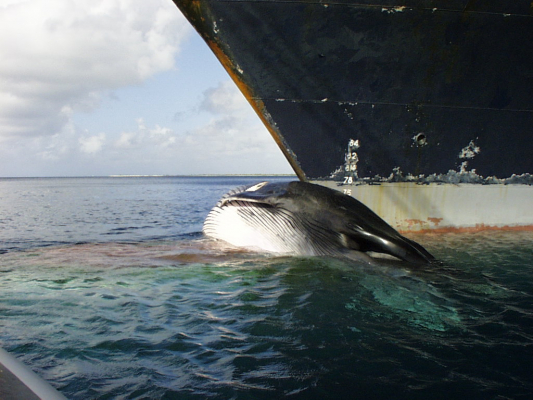IWC Workshop: Locating Ship Strike Hotspots
An initiative to identify areas at high risk of collisions between whales and vessels will take important steps forward at a workshop in Greece this weekend.
IWC experts will work with colleagues from the International Union for the Conservation of Nature (IUCN) and the Agreement for the Conservation of Cetaceans of the Black Sea, Mediterranean Sea and Contiguous Atlantic Area (ACCOBAMS), at the event in Messinia, which will use the Mediterranean Sea as a test case.
It’s hard to assess the extent of vessel collisions with whales, which are known as ship strikes. Incidents are often unnoticed and therefore unreported, unless the struck whale happens to become lodged on the bulbous bow of the ship involved. Nevertheless, based on evidence from a range of sources, including examination of dead whales, experts have concluded that ship strikes are a problem that may have long-term consequences for some cetacean populations. Work to improve understanding of where ship strikes occur, and to develop effective solutions, is a priority for several organisations including the IWC.
The first stage is to map where busy shipping lanes coincide with whale habitat and migration routes, and assess which of these populations may be most at-risk in terms of conservation status. The IUCN has been working on a programme to systematically identify Important Marine Mammal Areas (IMMAs) and this workshop will look at the background and development of IMMAs, and how they might be overlaid with shipping information and used to help pinpoint ship strike ‘hotspots.’
The workshop will also look at the types of mitigation actions available. These include re-routing of shipping lanes, vessel speed reductions and availability of real-time information about whales’ movements.
The workshop takes place 6-7 April as a pre-meeting to the Fifth International Conference on Marine Mammal Protected Areas (8-12 April).
For more information on ship strikes click here.

